Outdoor bonsai provide year round interest and can create a lovely feature in a small garden, focal point in the corner of a larger garden or even as a centrepiece for your patio table.
Unlike indoor bonsai, outdoor ones are created from hardy trees. Many trees and shrubs can be turned into attractive outdoor bonsai, including beech, firs, azalea, lilac, lime, willow, cherry and oak.
Indoor plants are subject to the vagaries of dry atmosphere, central heating and lack of light. These can make caring for indoor bonsai challenging. I have found that outdoor bonsai are a great entry-level idea as there are fewer challenges in their care.
Choice plants for seasonal interest
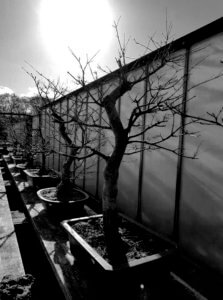
This black and white image taken at Heron’s Bonsai Nursery shows effective winter structural interest.
By virtue of their careful training, bonsai can provide year round interest. In winter their branch structure create drama, particularly when artfully displayed.
In spring, those with flowers – such as azalea, cherry and malus (Crab apple) – provide a stunning blossom show.
Those with interesting leaf forms – such as oak and ginkgo provide pretty summer displays and those with autumnal leaf colour provide drama in the fall. Some, such as the crab apple even display autumnal fruits.
Displaying outdoor bonsai against a plain wall really shows them off. Think about placing them on an outdoor shelf, table-top or plant stand where they can create an excellent focal point in a courtyard garden.
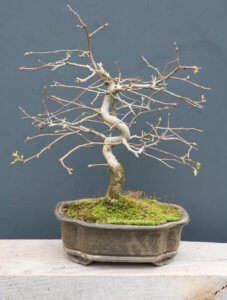
The structure of this bonsai Hornbeam is showcased against a plain grey wall
RHS Wisley’s Outdoor Bonsai display
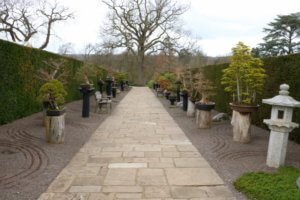
RHS Wisley’s Bonsai Walk – worth strolling down – even in winter.
Wisley gardens in Surrey was where I first encountered a mass display of outdoor bonsai. Called the Bonsai Walk it runs alongside the Alpine Houses. Tens of hardy bonsai line a central path edged with raked gravel.
You can see many types of outdoor bonsai here, including oak, ginkgo, cherry and juniper. The plants are displayed on simple oriental styled wooden stands, painted a plain black or on wooden tree stumps. It is well worth walking down if you’re visiting the gardens at any time of year.
My favourite outdoor bonsai
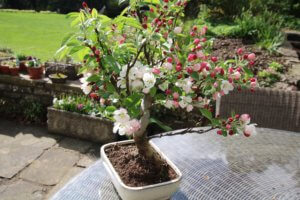
Outdoor bonsai make excellent table centrepieces
This bonsai crab apple is my favourite. It was bought for me by my family on a birthday visit to Herons Bonsai Nursery in Surrey. The plant came semi-trained, and already had a decent shape. I have tinkered with it further by pruning and wiring.
It is possible for you to train any small plant or rooted cutting but gaining a good shape could take a number of years. I decided therefore to start with a semi-trained one. I hoped this would build my confidence and hone my skills.
I was completely new to bonsai training and was a bit nervous. The nursery staff at Herons helped me to relax as they said there are no rules. As it’s my plant I can train it in any way that pleases me.
I started off with no plan but once I had pruned the first branch away, I began to see what I could achieve. I pruned about a fifth of the branches away to reduce overcrowding. In late winter the buds were already visible and my aim was to create a structure to display the blossom more artfully.
I also wired a couple of stems. By curling wire around the stem, the branches can be shaped and curved. You can also wire a branch to the base of the plant to pull it downwards. After 2-3 months the wire can be removed and the branch should stay put.
My wiring was not neat but it did the job over the winter months and provided a shape I was happy with for the display of blossom.
A word about cost
The best bonsai trees, outdoor or indoor, have been trained and cared for over many years by expert growers and can live to be several hundred years old. Some are valued in the tens of thousands and the art of bonsai can, like any form of gardening, become an expensive obsession.
My semi-trained crab apple bonsai cost me around £100 but larger or more unusual ones can be bought from nurseries costing anything from a few hundred to a few thousand pounds. It’s definitely worth visiting a nursery to choose your tree as shape is important. You will also be able to get good advice from the staff on bonsai care and training.
I have also bought a small ginkgo bonsai, which has just a basic structure of a stem and two branches. This I bought for £15.99 from a local garden centre and I plan to experiment with training it.
Caring for your outdoor bonsai
The types of bonsai sold for outdoor display are fully hardy in the UK and will cope with cold wet weather, frost and snow. When temperatures were forecast this winter to dip below -6 I did put mine in a shed overnight as I didn’t want the pot to shatter.
I think the plant would have been fine, but many bonsai are potted into enamelled or terracotta pots which can break in extreme cold.
Summer is when most attention is required for outdoor bonsai and watering often is key. The roots of bonsai are constrained in very small pots which will dry out quickly in warm weather. Watering once a day is probably necessary, twice a day in very hot weather – as you would tomatoes.
Herons nursery advised me to think of them as a pet and to give them to a friend to look after if you go on holiday in summer – as you would a hamster.
You can start feeding your bonsai once it comes into leaf or has flowered. I will be using a proprietary bonsai feed once a month from march until leaf fall.
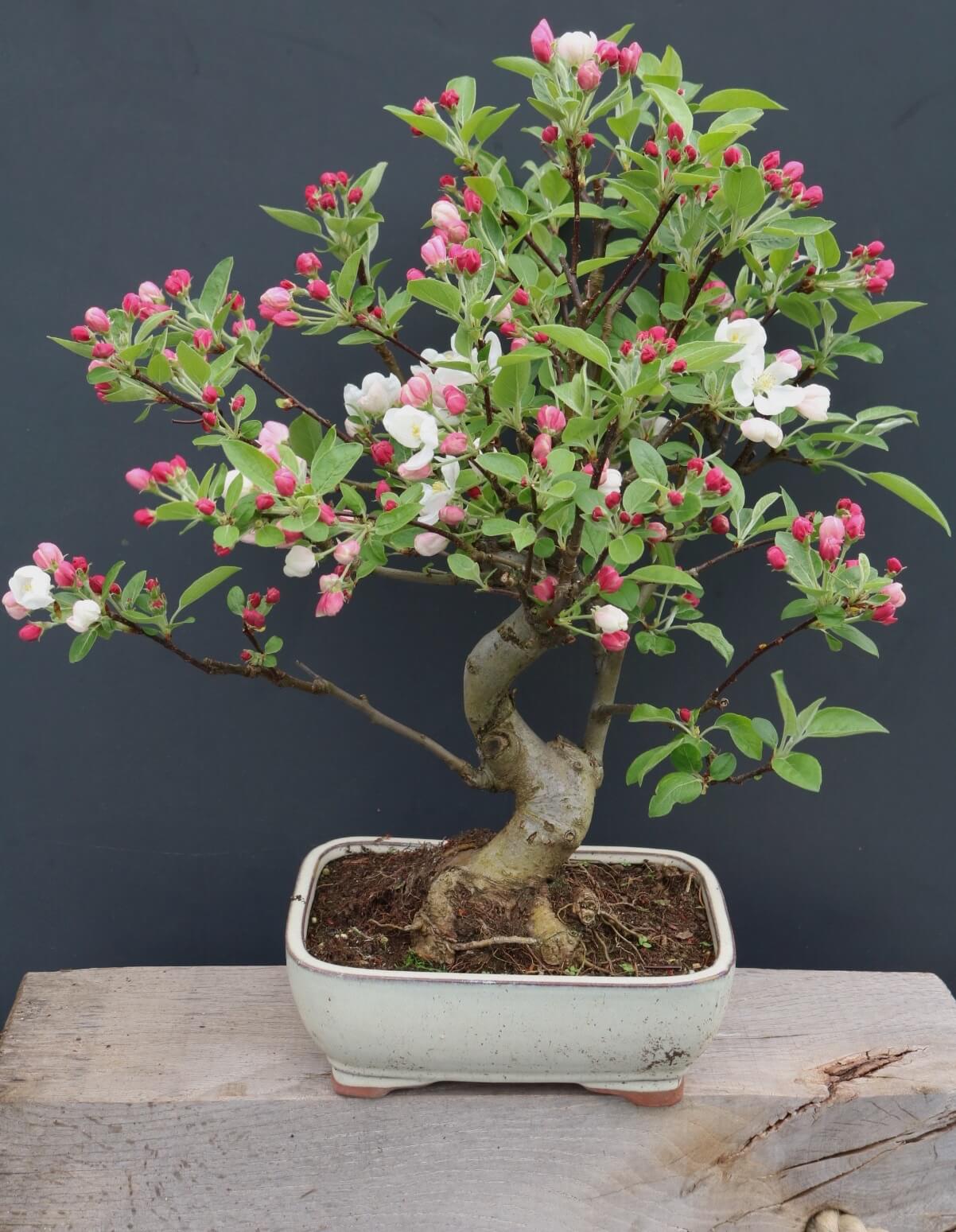
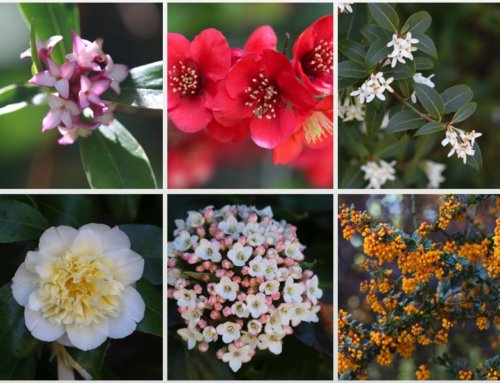
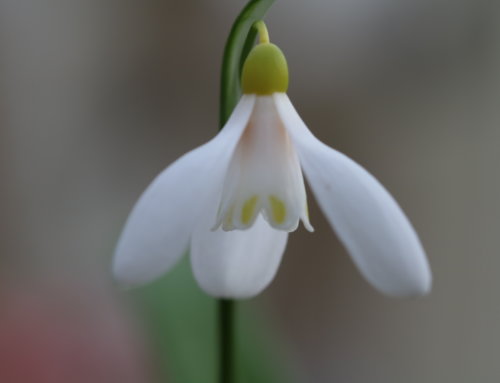
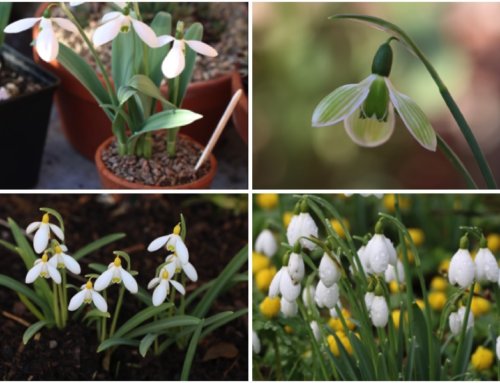
Great post Katharine. I also like bonsai and I’ve got 2. First is a ficus ginseng bonsai (indoors) and the second an acer palmatum (outdoors) .I will be posting about it on Twitter soon. This acer is a selfmade bonsai and I’m proud of its shape. Still young, we will see in a few years how it will happen.
(A crab apple bonsai should be easy to create: a good idea you gave me !)
Hi Fred, I can’t wait to see your bonsais on twitter. I’m impressed you’ve shaped them completely yourself. I think my ginkgo will be a bit of a challenge but you’ve given me the boost I need to carry on with it and shape it over the next few years. I love Ginkgo but haven’t got a place for a life size one in my garden. A bonsai is the perfect compromise!